Odoo hat über die letzten vier Versionszyklen hinweg eine bemerkenswerte Entwicklung durchlaufen.
Odoo 16 brachte mehr Leistung, Odoo 17 eine komplett neue Optik und bessere Struktur. Mit Odoo 18 kamen mehr Intelligenz und Automatisierung.
Das kommende Odoo 19 baut auf diesem Fortschritt auf: von schnell über integriert hin zur KI-gesteuerten Plattform.
Im Folgenden sehen wir uns App für App an, wie stark sich Odoo von der Version 16 bis zu Odoo 19 verbessert hat.
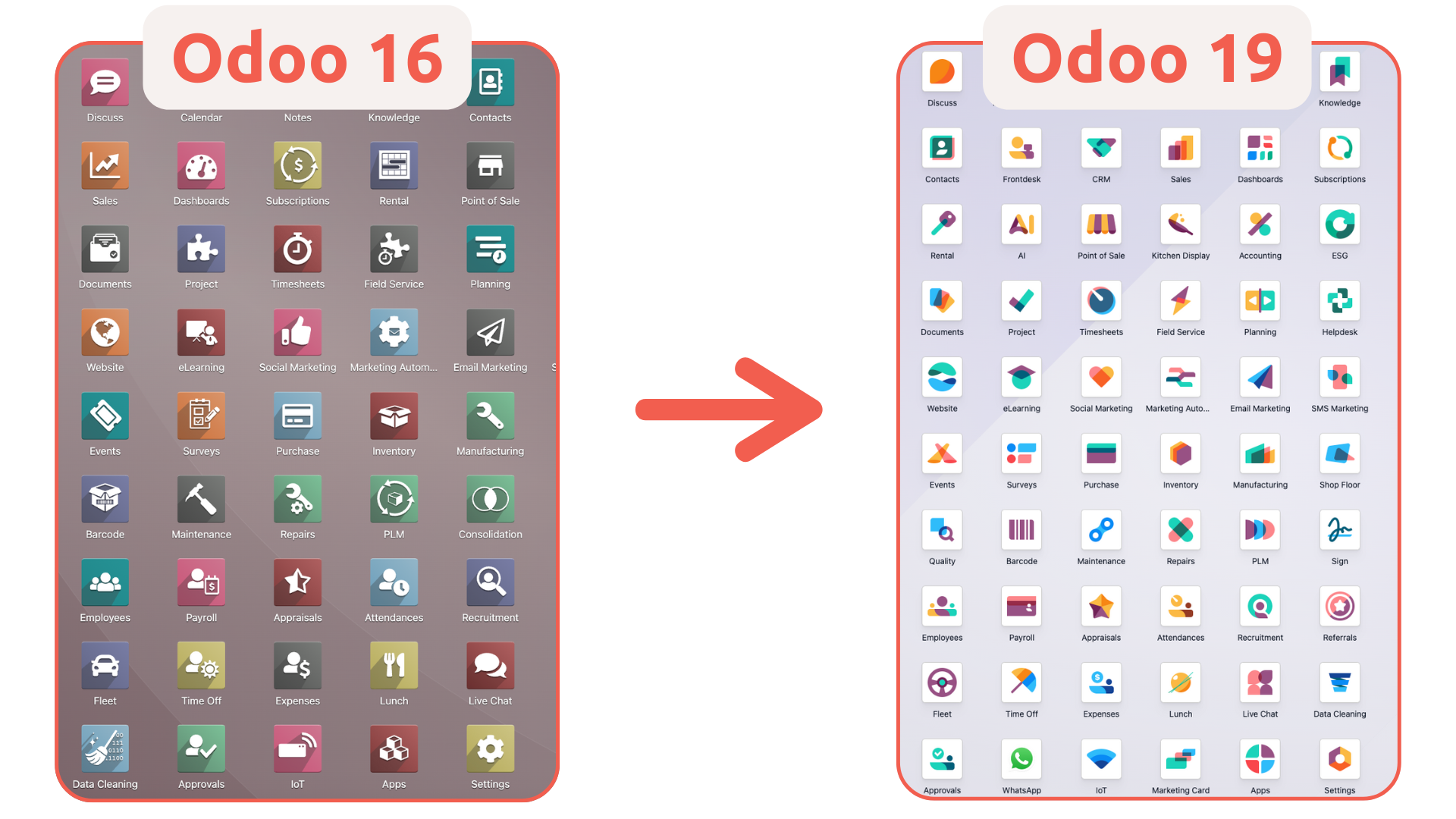
Odoos Entwicklung: Die Produktzyklen im Überblick
Jede Odoo-Hauptversion baut auf der Vorherigen auf.
Odoos Ziele bleiben dabei gleich: einfachere Bedienung, bessere Vernetzung der Apps und mehr automatisierte Arbeit.
Jede Version war ein wichtiger Schritt zu Odoo 19, das im September erscheint.
Version | Veröffentlichung | Hauptthemen |
16 | Oktober 2022 | Geschwindigkeit, Überarbeitung des Backends, einheitliche Benutzeroberfläche |
17 | November 2023 | Neues App-Design, Planungsfunktionen, bessere Übersicht über alle Apps |
18 | Oktober 2024 | Optimierte Workflows, "Mobile-First" |
19 | September 2025 | KI-Integration, Marketing-Update, Automatisierung |
CRM und Verkauf
Das CRM in Odoo wurde zwar immer zusammen mit der Verkaufs-App genutzt, aber der End2End-Prozess zwischen Leads, Opportunities und Follow-ups war noch recht lose verbunden.
Über die letzten Odoo-Versionen hinweg hat sich diese Lücke geschlossen. Was als zwei Apps begann, funktioniert heute eher als eine einzige, nahtlose Vertriebsumgebung.
Das bedeutet klare Strukturen, Übergabe-Logik und transparente Schritte, die zeigen, wie Teams Deals effizient voranbringen.
Odoo 16
- Schnelle Pipeline-Navigation.
- Vorlagen waren vorhanden, aber wenig anpassbar.
- Signaturen und Dokumente mussten in anderen Apps erstellt werden.
Odoo 17
- Wiederverwendbare Angebotsblöcke für ein einheitliches Design.
- Klarere Signatur-Prozesse.
- Vertriebsaktivitäten direkt im CRM Kanban.
Odoo 18
- Einführung von Kombi-Produkten und KI-gestützten Vorschlägen.
- Bessere Sichtbarkeit der Pipeline und der Kundenhistorie.
- Katalog- und Angebotsvorlagen.
Odoo 19
- Erwartet wird eine tiefere Integration von CRM, Angeboten, Dokumenten und der Signatur-App.
- Fokus auf geführte Genehmigungen und einfache Workflows.
- KI-gestützte Server-Aktionen und KI-Assistenten helfen im Vertrieb (z.B. kontextbezogene Vorschläge, automatische Erinnerungen).
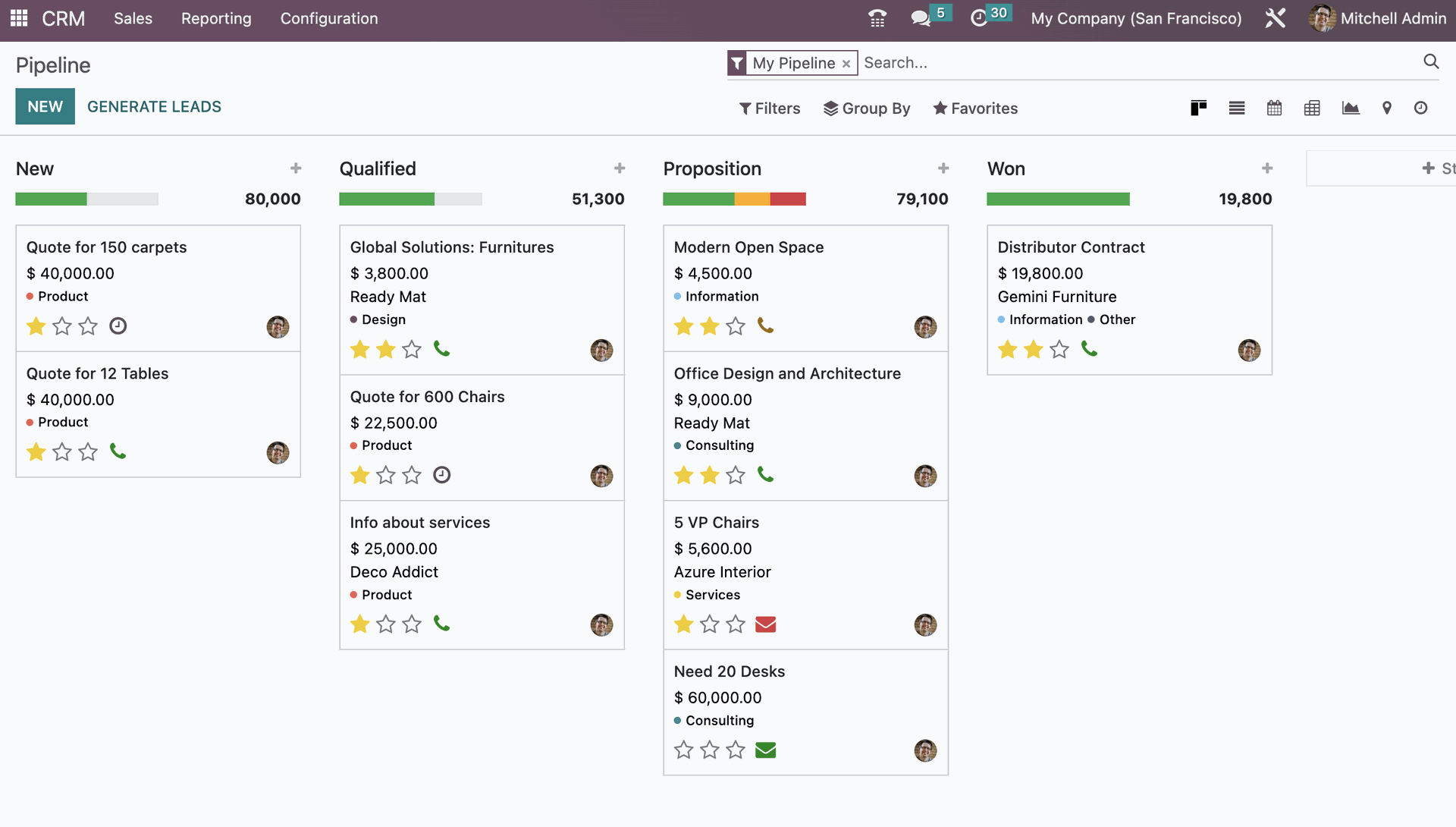 CRM Pipeline Kanbanansicht in Odoo 16
CRM Pipeline Kanbanansicht in Odoo 16
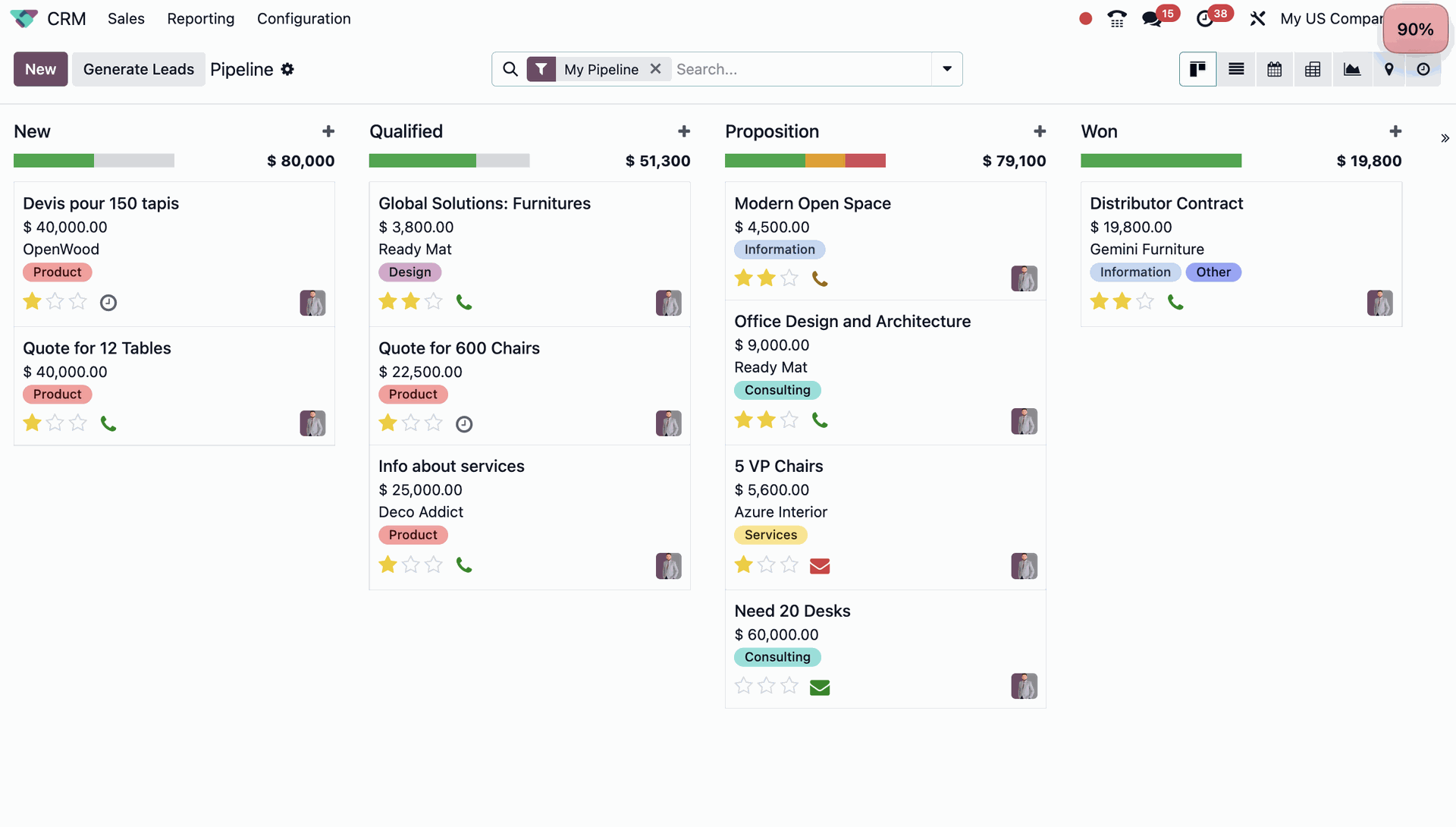 CRM Pipeline Kanbanansicht in Odoo 18.4 (die aktuellste Version)
CRM Pipeline Kanbanansicht in Odoo 18.4 (die aktuellste Version)
Buchhaltung und Finanzen
Odoos Buchhaltungs-App ist zum Herzstück für integrierte Finanzprozesse geworden.
Sie unterstützt viele lokale Regeln (über 100 Lokalisierungspakete), reduziert Klicks im Alltag und bringt Automatisierung dorthin, wo sie am dringendsten gebraucht wird.
Die Odoo-Buchhaltung kann heute den gesamten Finanz-Workflow abdecken.
Von Ausgaben und Zahlungen bis hin zu Prüfungen und Compliance – unterstützt durch starke KI.
Odoo 16
- Schnellere Abstimmung und konsistenterer Rechnungs-Export.
- Die Mehrwertsteuer-Einrichtung war oft noch manuell.
Odoo 17
- Vereinfachte Einrichtung des Kontenplans.
- Hinzufügen von Lokalisierungsvorlagen und bessere Filter.
- Detaillierte Konsolidierungs-Übersichten.
Odoo 18
- Start der KI-gestützten Abstimmung und der Ausgaben-Automatisierung.
- Finanz-Dashboards in Echtzeit.
Odoo 19
- Einführung von Audit-Ready-Workflows und Compliance-Standards.
- Vorkonfigurierte Finanz-Einstellungen für den Mittelstand.
- KI-generierte Server-Aktionen, Support-Chatbots und bessere OCR-Erkennung für Rechnungen und Ausgaben.
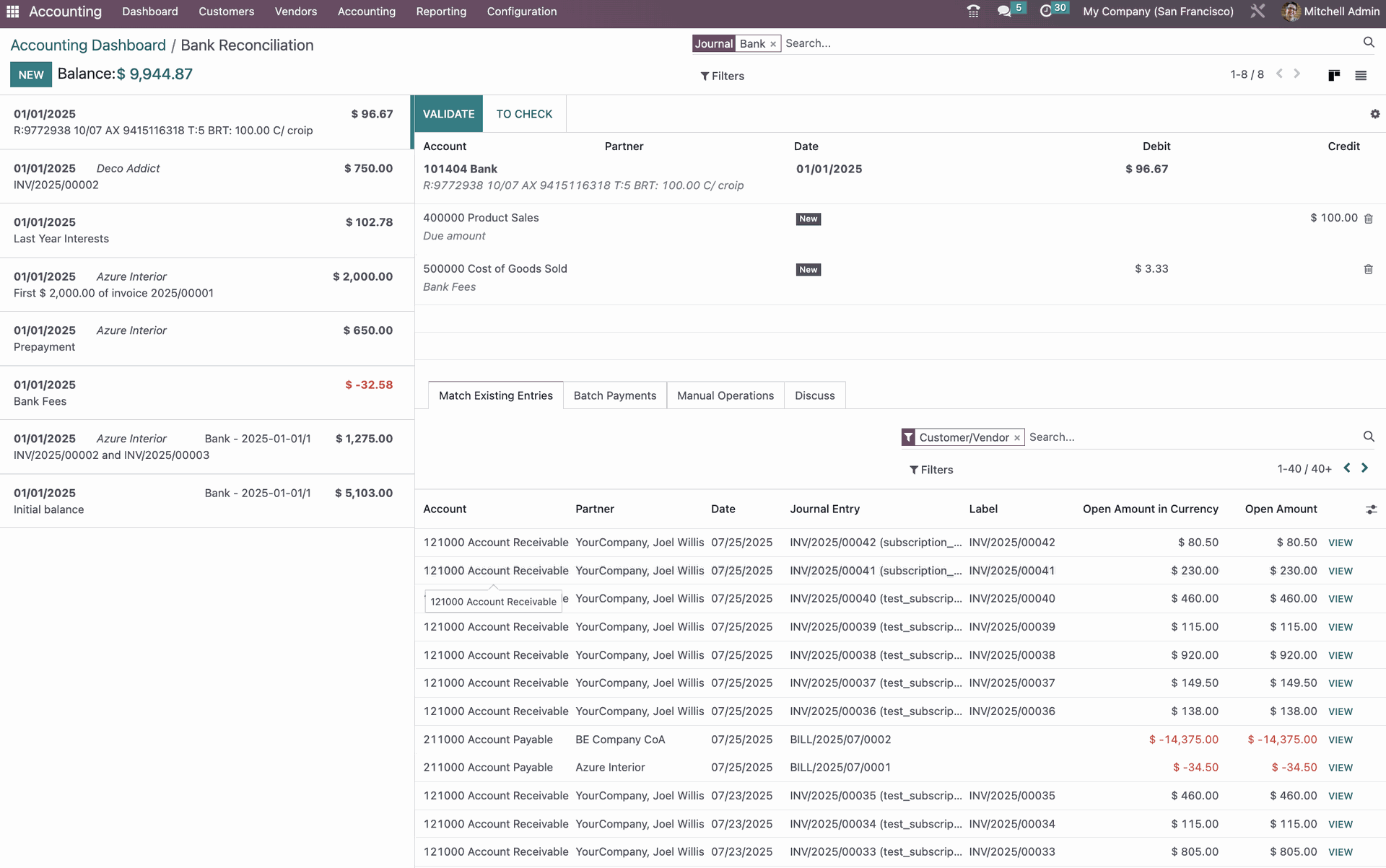 Kontenabstimmung in Odoo 16
Kontenabstimmung in Odoo 16
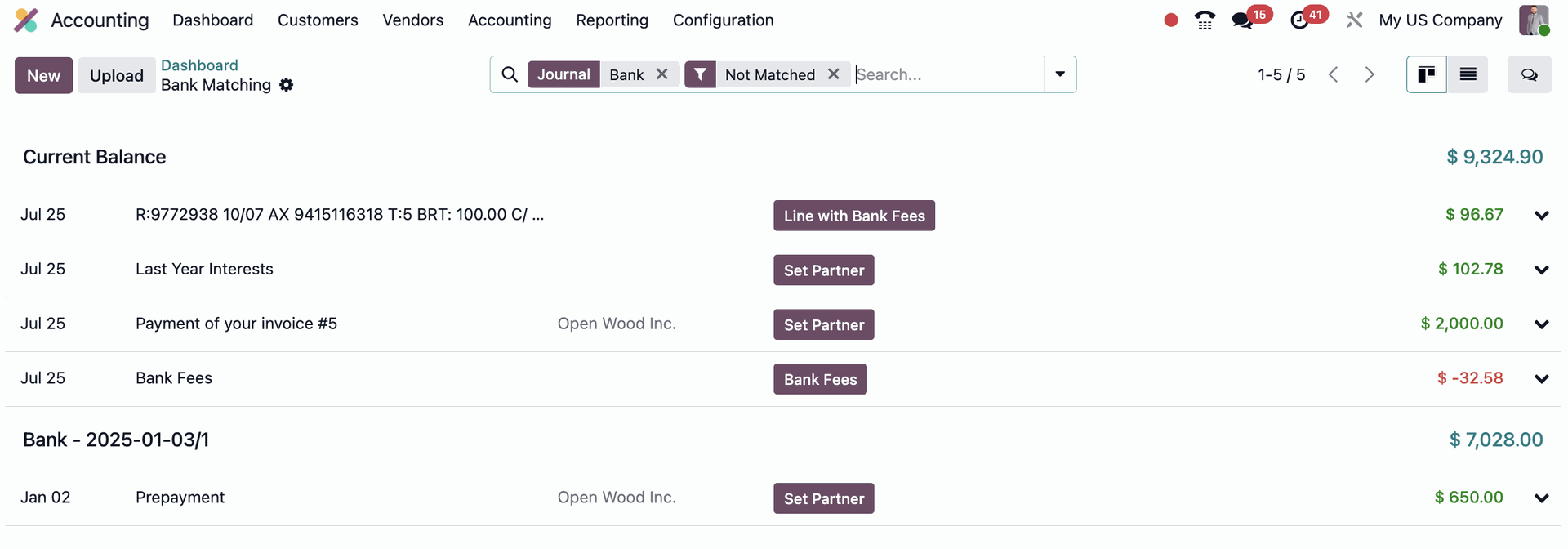 Kontenabstimmung in Odoo 18.4
Kontenabstimmung in Odoo 18.4
Website und E-Commerce
Die Apps Odoo Website und Odoo Webshop waren in Version 16 noch getrennt. Heute sind sie vereint.
Ein einziger Website Builder verwaltet nun Seiten, Produkte und Designs ohne Umwege.
Die Tools für SEO, Produktlogik und Kunden-Checkout wurden in ein einziges System überführt. Es ist nicht länger ein CMS plus ein Shop, sondern eine integrierte Plattform.
Odoo 16
- Website und Shop brauchten separate Einstellungen und Design.
- Anpassungen waren nur mit Programmierern möglich.
Odoo 17
- Neue Front-End-Funktionen wie Produktfilter.
- Checkout- und Lieferprozess vereinfacht.
Odoo 18
- Einführung eines einheitlichen Builders für Web und Shop.
- KI-generierte Content-Blöcke und zentrale SEO-Einstellungen.
Odoo 19
- Unterstützt Multi-Sprachen- und Multi-Brand-Setups aus einem einzigen Builder.
- Nahtlose und zentrale Verwaltung.
- KI-gesteuerte SEO-Prüfungen, dynamische Texte per Spracheingabe und Website-KI-Assistenten für Inhalte.
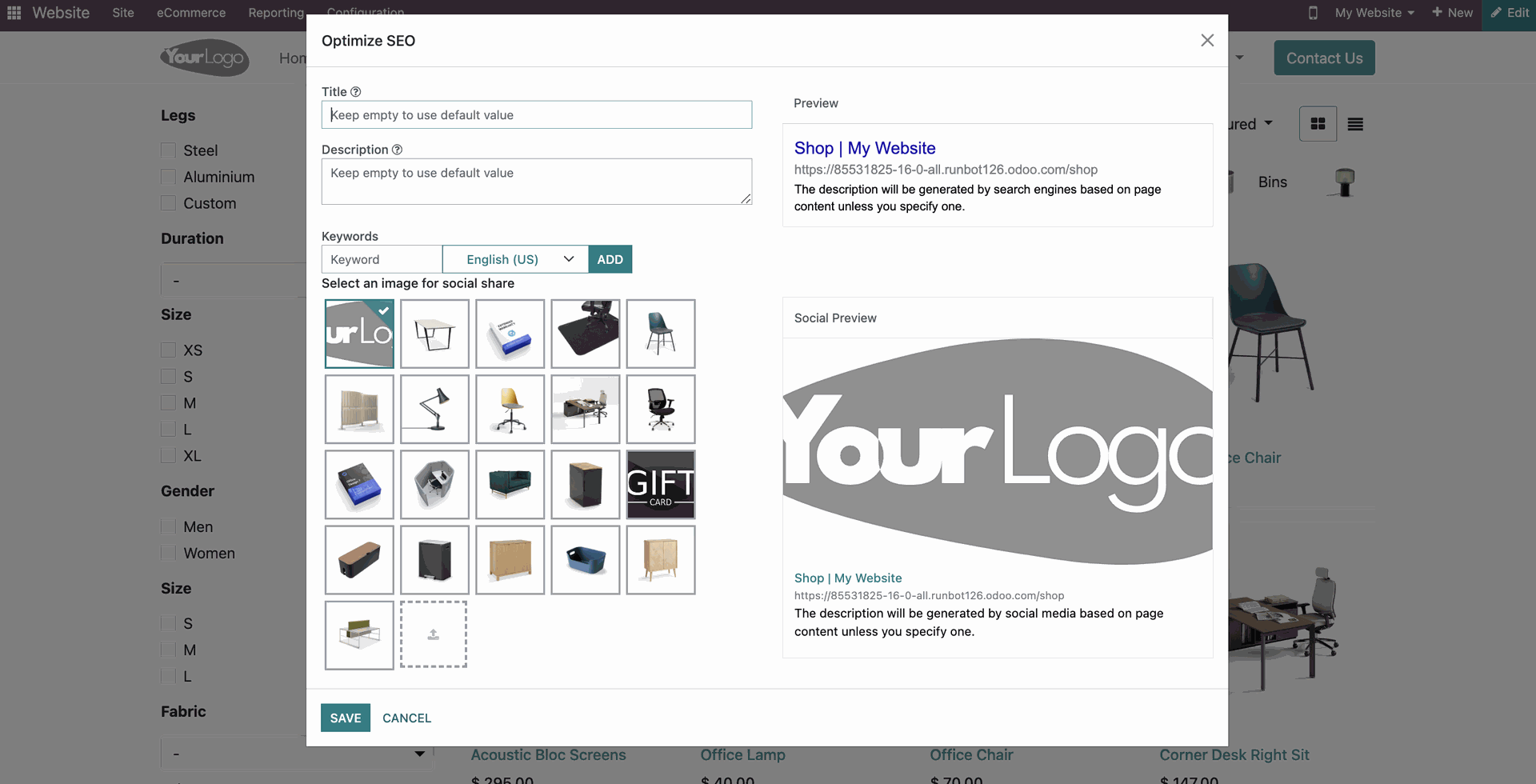 SEO-Optimierung der Website-Produktseite in Odoo 16
SEO-Optimierung der Website-Produktseite in Odoo 16
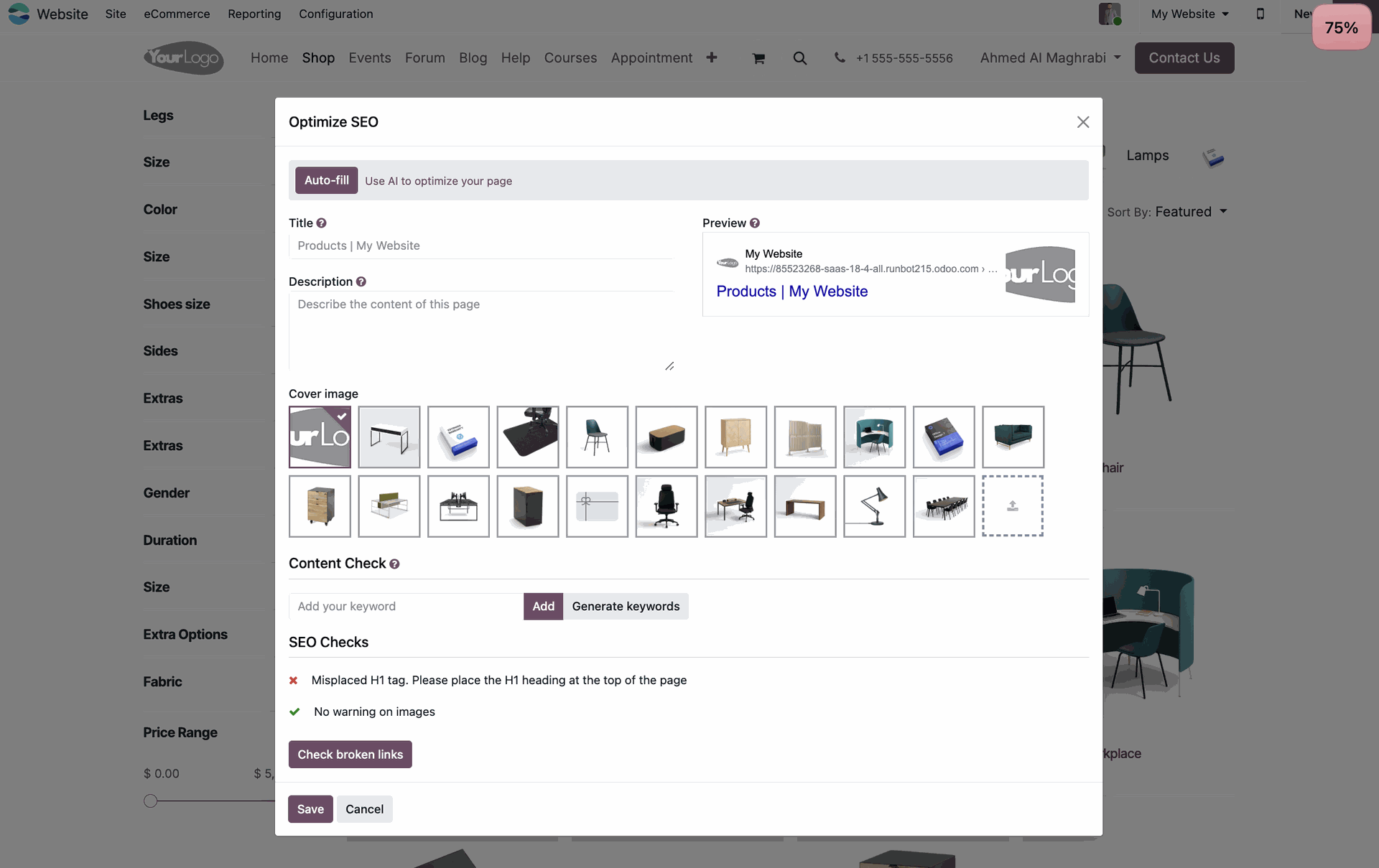 SEO-Optimierung der Website-Produktseite in Odoo 18.4
SEO-Optimierung der Website-Produktseite in Odoo 18.4
Lager und Fertigung
Der Fortschritt in den letzten Odoo-Versionen lag nicht nur in neuen Funktionen, sondern in der Planungslogik und der einfachen Nutzung.
Die Lager und Fertigungs-Apps von Odoo unterstützen jetzt Tracking, Prognosen und Produktionsentscheidungen basierend auf Echtzeit-Daten. Die Barcode-Erkennung funktioniert mobil und offline. Warnungen erscheinen direkt dort, wo man sie braucht.
Odoo 16
- Barcode-Scanning und Routing-Regeln waren vorhanden.
- Es fehlte an guter mobiler Nutzung und visueller Verfolgung.
Odoo 17
- Routen-Tracking direkt aus Produktformularen möglich.
- Arbeitsauftragsansichten und Equipment-Planung hinzugefügt.
Odoo 18
- Eine Mobile-First-Barcode-App wurde eingeführt.
- Bedarfsprognosen (Demand Forecasting) und Chargenverfolgung kamen hinzu.
Odoo 19
- Vorschauen zeigen Dashboards mit Nachschub-Warnungen.
- Echtzeit-Überwachung der Produktion.
- KI-basierte Prognose-Trigger und mobiles QR-Scanning mit KI-Textzusammenfassung.
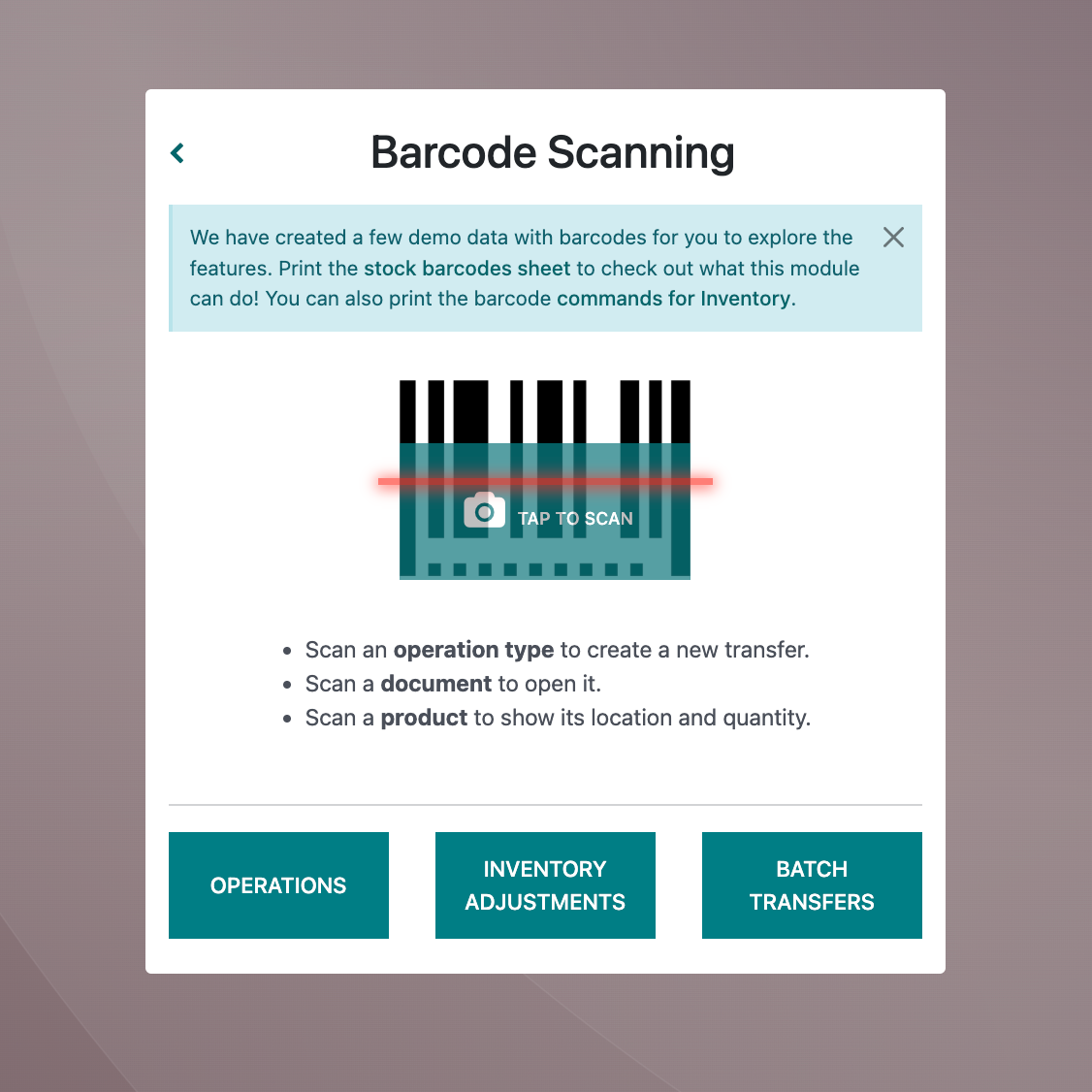 Barcode-Scannen in Odoo 16
Barcode-Scannen in Odoo 16
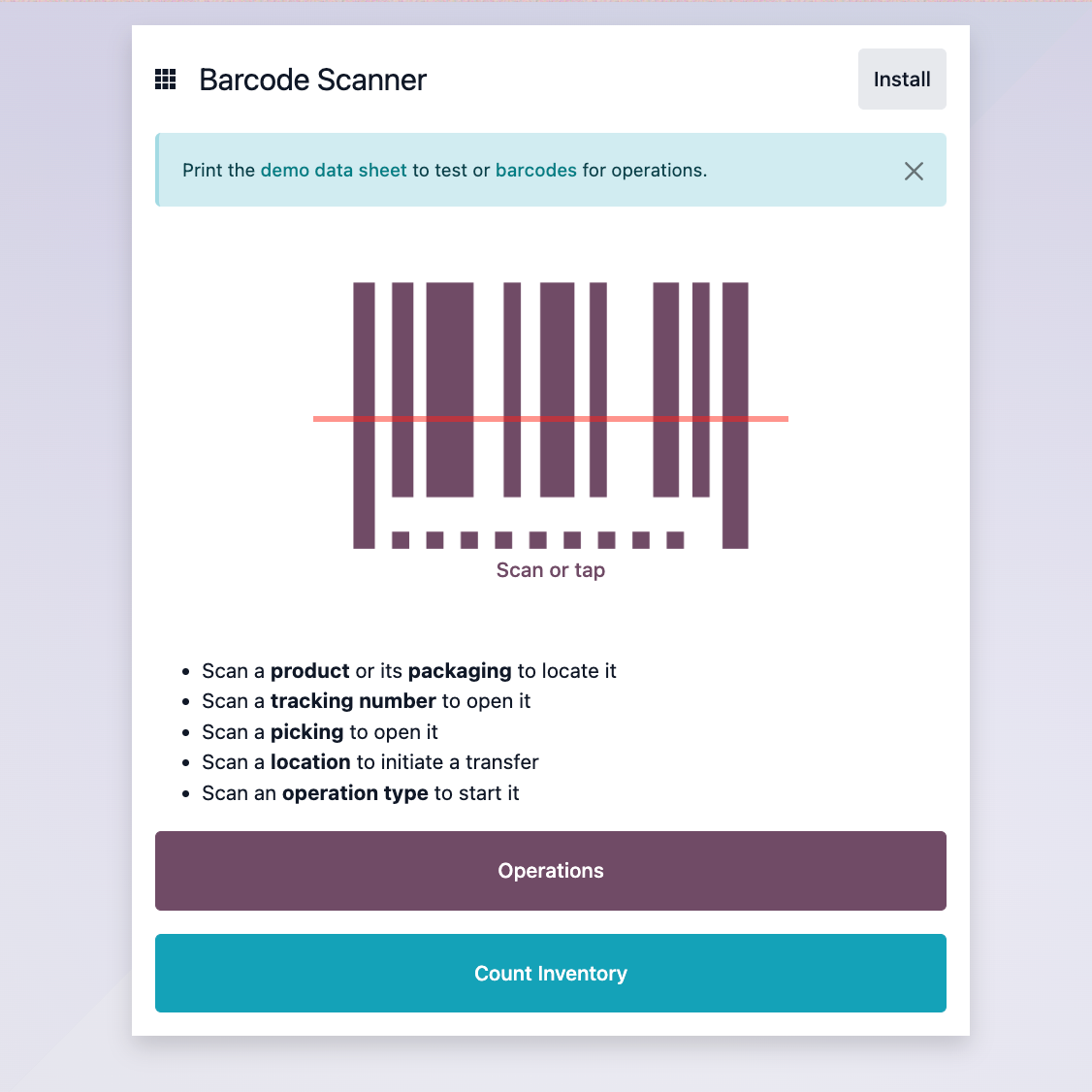 Barcode-Scannen in Odoo 18.4
Barcode-Scannen in Odoo 18.4
Personalwesen (HR)
Die HR-Apps von Odoo sind heute eine zusammenhängende App-Suite. Alle Personalprozesse laufen jetzt zentral und reibungslos ab.
Neue Mitarbeiter werden direkt in die Planungs- und Vertragsprozesse eingebunden. Mitarbeiterprofile sind direkt mit Beurteilungen, Weiterbildungen und Kompetenzen verknüpft. Urlaubsanträge und -genehmigungen werden zentral an einem Ort bearbeitet.
Jedes Update hat die Prozesse weiter optimiert und so die Lücke zwischen den Personaldaten und den unterstützenden Workflows geschlossen.
Odoo 16
- Grundlegende Urlaubs-, Vertrags- und Beurteilungsfunktionen.
- Das Onboarding war weitgehend manuell.
Odoo 17
- Planung mit Rekrutierung und Zeiterfassung integriert.
- Vereinfachte Genehmigung von Arbeitszeiten.
Odoo 18
- KI-generierte Stellenbeschreibungen.
- Einführung von Onboarding-Aufgaben-Vorlagen und strukturierten Beurteilungszyklen.
Odoo 19
- Vereinheitlichung von Einstellung, Onboarding, Urlaub und Feedback.
- HR-Funktionen in einem einzigen Mitarbeiter-Dashboard.
- KI-Assistenten für Onboarding, Performance-Zusammenfassungen und Aufgabenerinnerungen.
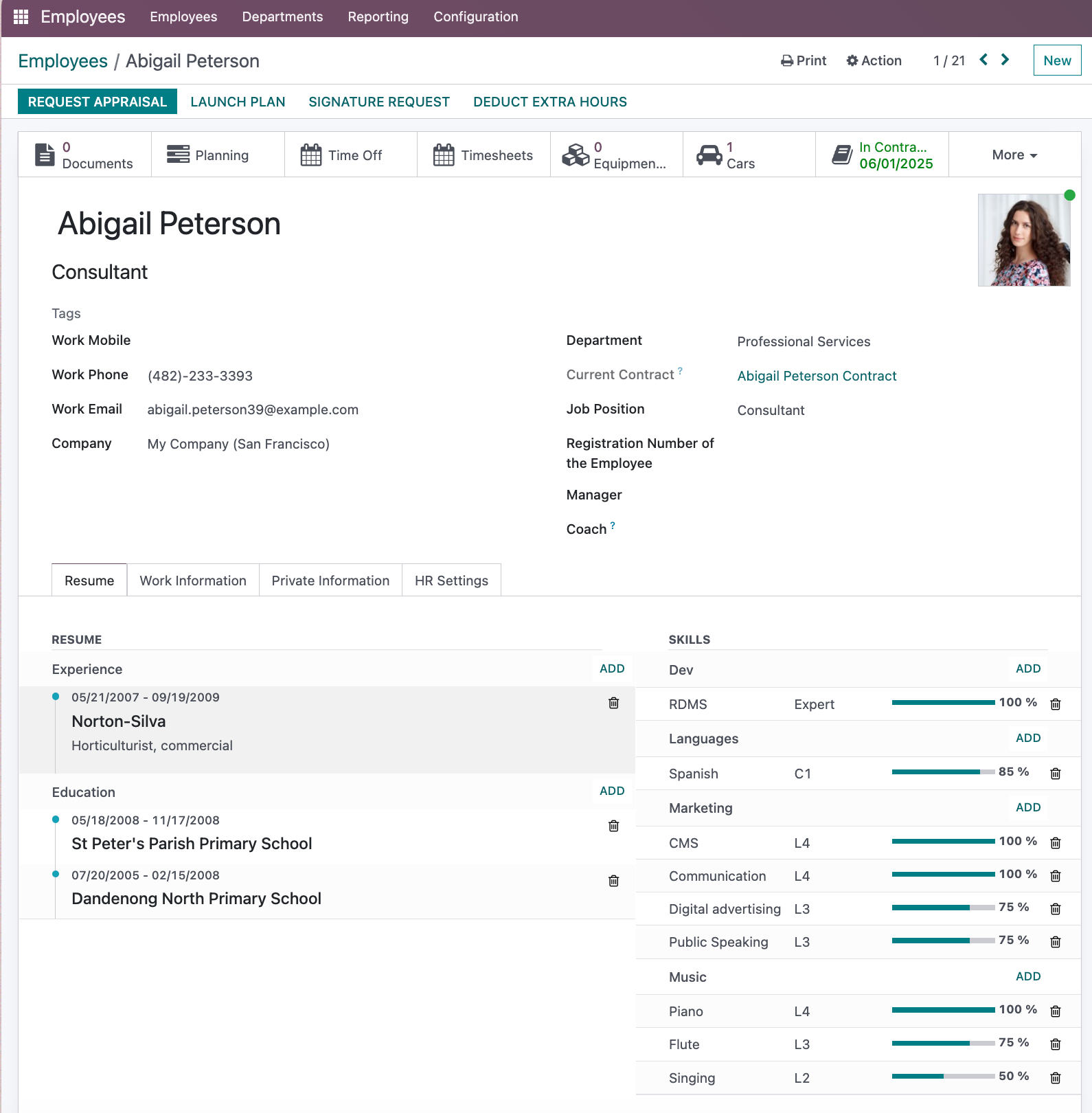 Mitarbeiterprofil in Odoo 16
Mitarbeiterprofil in Odoo 16
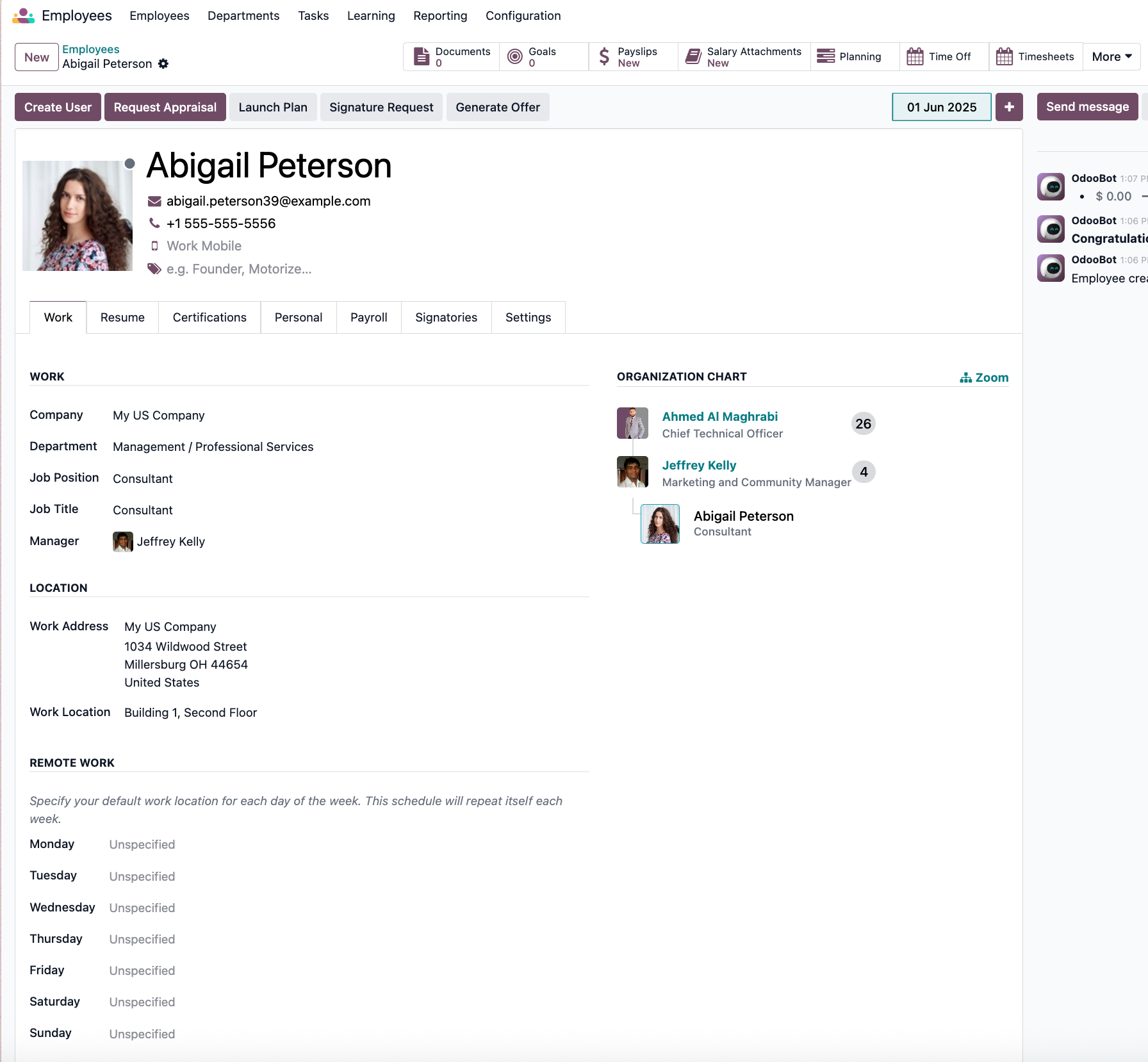 Mitarbeiterprofil in Odoo 18.4
Mitarbeiterprofil in Odoo 18.4
Projekt- und Service-Management
Die Apps Projekt und Zeiterfassung waren früher stark auf Verwaltung fokussiert. Heute sind sie zentrale Tools für die Kundenabwicklung und Teamkoordination.
Die Apps bilden den gesamten Service-Prozess ab. Teams können planen, verfolgen und berichten, wobei Rentabilität und Ressourcenplanung direkt in den Aufgaben sichtbar sind.
Odoo hat die Projektlogik in Richtung Lieferlogik verlagert, insbesondere für Unternehmen, die nach Zeit abrechnen.
Odoo 16
- Bot nur grundlegendes Aufgaben- und Phasen-Tracking an.
- Die enge Verknüpfung zu Zeiterfassung und Abrechnung fehlte.
Odoo 17
- Bearbeitbare Gantt-Diagramme mit Ressourcenplanung.
- Mobile Unterstützung für den Außendienst.
Odoo 18
- Einführung von Zeiterfassungs-Genehmigungen und Rentabilitäts-Tracking.
- Verknüpfung von Team- und Kundendokumenten möglich.
Odoo 19
- Unterstützt einklappbare Gantt- und Service-Kalenderansichten.
- Erwartet wird die vollständige Integration von Aufgaben, Planung und mobilem Service-Management.
- KI-gesteuerter Projekt-Assistent, intelligente Planungsvorschläge und Chat-Hilfe innerhalb der Aufgaben.
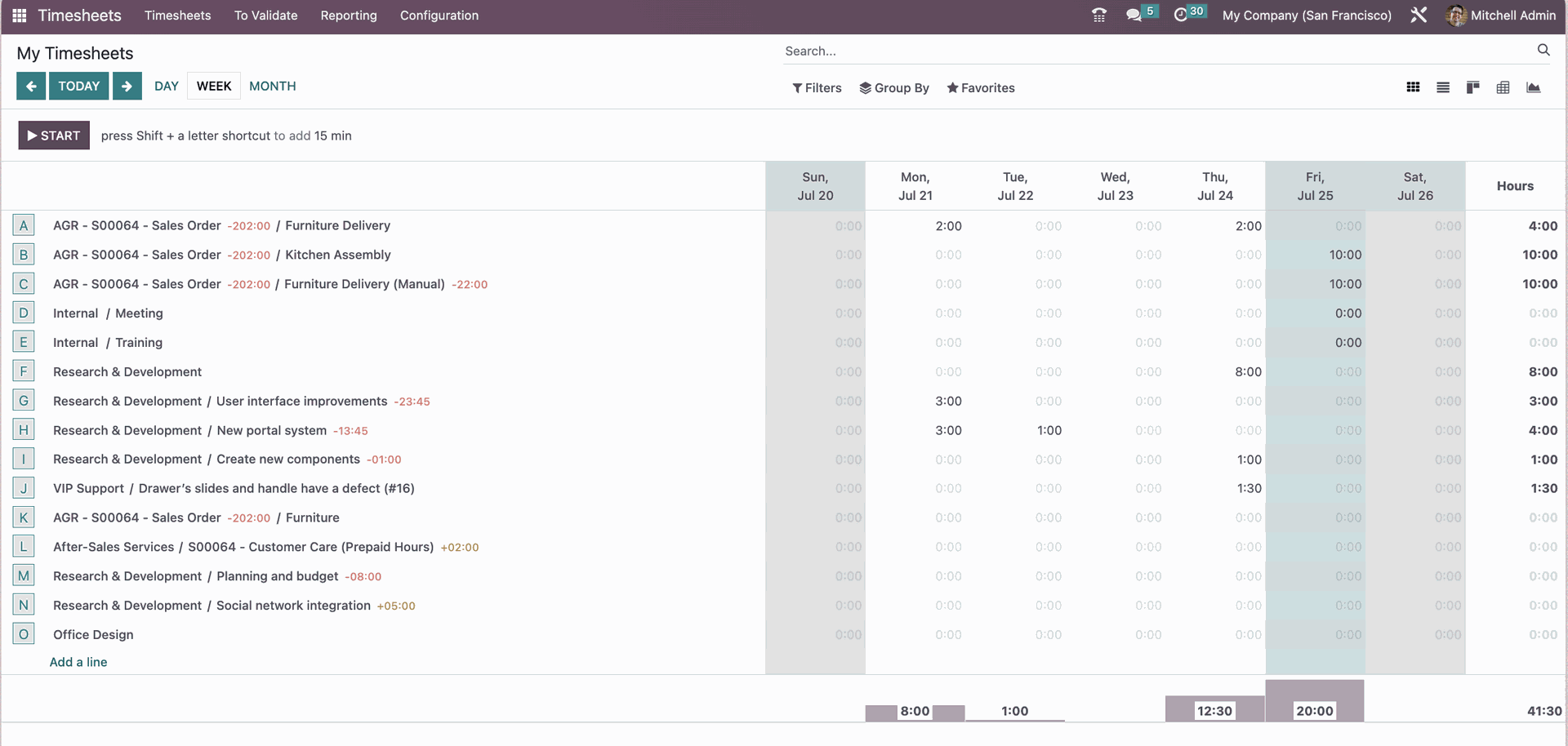 Zeiterfassung in Odoo 16
Zeiterfassung in Odoo 16
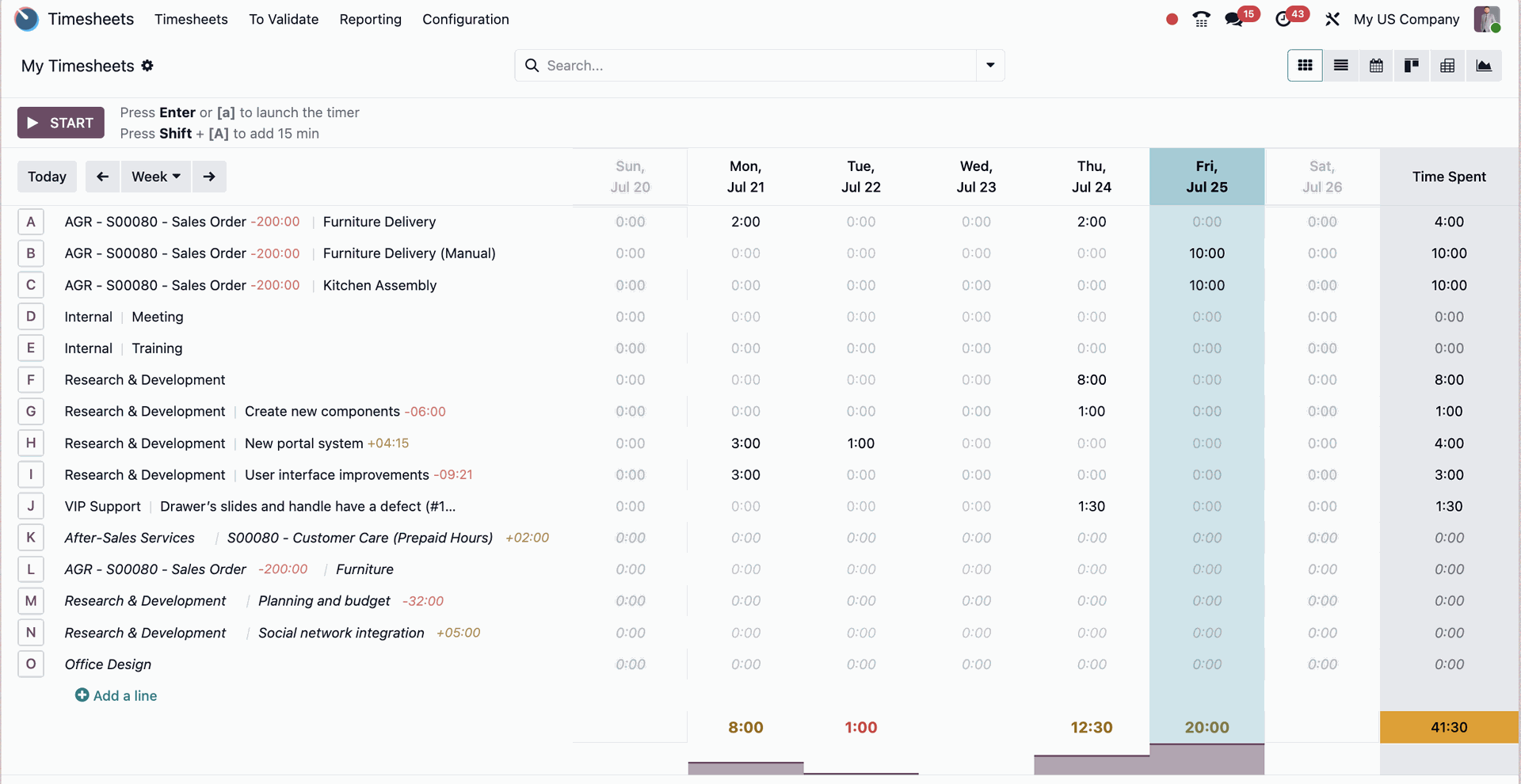 Zeiterfassung in Odoo 18.4
Zeiterfassung in Odoo 18.4
Odoos nächstes großes Ziel: Künstliche Intelligenz (KI)
Odoo entwickelt sich von einem vollintegrierten ERP-System zu einer Plattform, die durch KI angetrieben wird.
Automatisierung hat sich in den letzten Versionen still und heimlich in fast jede Odoo-App geschlichen (Automatisierungsregeln, Chatbots, OCR-Rechnungen). Die spezielle KI-App in Odoo 19 ist nur der nächste Schritt in dieser Entwicklung.
Fabien Pinckaers, Gründer und CEO von Odoo, fasste dies kürzlich so zusammen:
Für andere Softwareanbieter ist es extrem komplex, KI in jede einzelne Anwendung zu integrieren..
Für uns, wegen der modularen Bauweise von Odoo, werden diese KI-Funktionen direkt über alle Business-Apps hinweg funktionieren. Und sie werden vollständig miteinander integriert sein. Das wird extrem leistungsstark.

Fabien Pinckaers, Gründer und CEO von Odoo, auf der Odoo Experience 2024
Diese Richtung ist in allen Modulen spürbar.
Intelligente Vorschläge, Agenten und Server-Aktionen breiten sich aus. Odoo lernt, passt sich in Echtzeit an und bietet kontextbezogene Unterstützung.
Odoo 19 wird diesen Fokus verstärken – indem es jedes bestehende Tool wesentlich intelligenter macht.
Bereit, mit Odoo zu wachsen? Sprechen Sie mit uns!
Odoo 19 baut auf jahrelangen Verbesserungen auf, um KI und integrierte Workflows in jede Kern-App zu bringen.
Wenn Sie ein Upgrade planen oder Ihr System um CRM, Buchhaltung, HR oder Service-Management herum gestalten, helfen Ihnen unsere Odoo-Experten, die besten Optionen für Ihr Unternehmen zu finden.